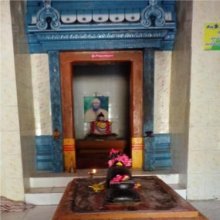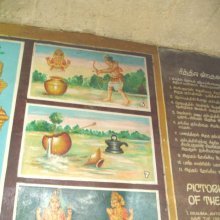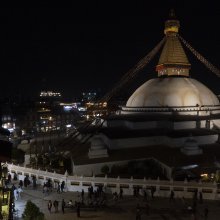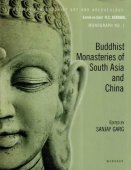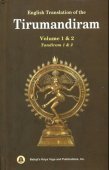Construction, Constructed, Constructing: 2 definitions
Introduction:
Construction means something in Hinduism, Sanskrit. If you want to know the exact meaning, history, etymology or English translation of this term then check out the descriptions on this page. Add your comment or reference to a book if you want to contribute to this summary article.
Images (photo gallery)
(+52 more images available)
In Hinduism
Vastushastra (architecture)
Source: Shodhganga: Elements of Art and Architecture in the Trtiyakhanda of the Visnudharmottarapurana (vastu)The Construction of the Temple is preceded by the process of site-selection (i.e., finding out the proper site before construction), according to the Viṣṇudharmottarapurāṇa, an ancient Sanskrit text which (being encyclopedic in nature) deals with a variety of cultural topics such as arts, architecture, music, grammar and astronomy.—Selection of the site is the prime and first duty of the constructor or the proprietor to find out a perfect land which should possess the required qualities. According to the Viṣṇudharmottarapurāṇa, in the process of construction of the temple, the land should be perfect and auspicious. [...] According to the Gobhilagṛhyasūtra, the site of temple construction should be even and it should be the one where water can flow to the east or north. [...] According to the Viṣṇudharmottarapurāṇa some inauspicious places are to be totally discarded for choosing a site for temple construction.

Vastushastra (वास्तुशास्त्र, vāstuśāstra) refers to the ancient Indian science (shastra) of architecture (vastu), dealing with topics such architecture, sculpture, town-building, fort building and various other constructions. Vastu also deals with the philosophy of the architectural relation with the cosmic universe.
Yoga (school of philosophy)
Source: ORA: Amanaska (king of all yogas): A Critical Edition and Annotated Translation by Jason BirchConstructions (of the mind) can be denoted by the Sanskrit term Viracita, according to the Amanaska Yoga treatise dealing with meditation, absorption, yogic powers and liberation.—Accordingly, as Īśvara says to Vāmadeva: “[...] By astonishing, [magical] feats such as [creating] enmity [among friends], driving off and killing [adversaries] and by [tantric] mantras [of all kinds], [deluded] multiplicity multiplies. By all [yogic] practices, the various Bandhas and Mudrās, nothing but union with ignorance [is achieved]. Meditation on points in the body, the channels [of vitality] and the six Cakras is an error of mind. Therefore, having abandoned all that, [because it has been] constructed (viracita) by the mind, resort to the no-mind [state]. [...]”.

Yoga is originally considered a branch of Hindu philosophy (astika), but both ancient and modern Yoga combine the physical, mental and spiritual. Yoga teaches various physical techniques also known as āsanas (postures), used for various purposes (eg., meditation, contemplation, relaxation).
See also (Relevant definitions)
Full-text (+3172): Bhadraganita, Nirmita, Yojana, Stupa, Vakyapaddhati, Imarata, Klapti, Sadagara, Kattada, Kattona, Punaracane, Nirmit, Viracane, Viracita, Eduka, Pradhva, Arthotpada, Racana, Agama, Racane.
Relevant text
Search found 326 books and stories containing Construction, Constructed, Constructing; (plurals include: Constructions, Constructeds, Constructings). You can also click to the full overview containing English textual excerpts. Below are direct links for the most relevant articles:
Vernacular architecture of Assam (by Nabajit Deka)
Growth and Development of Vernacular Architecture of Assam < [Chapter 3]
Techniques (g): Geomancy and Orientation of Forms < [Chapter 4]
Introduction (history and definition of vernacular architecture) < [Chapter 1]
Kashyapa Shilpa-shastra (study) (by K. Vidyuta)
6. Allocation of the Śālās < [Chapter 3 - Prākāra Lakṣaṇa]
4. Prākāra components (2): Pāda-māna < [Chapter 3 - Prākāra Lakṣaṇa]
The Matsya Purana (critical study) (by Kushal Kalita)
Part 1c - Architecture (vāstu) in the Matsyapurāṇa < [Chapter 7 - Art and Architecture in the Matsyapurāṇa]
Part 2 - Fort (durga) architecture in the Matsyapurāṇa < [Chapter 7 - Art and Architecture in the Matsyapurāṇa]
Part 1b - The Vedic and Purāṇic sources of Architecture (vāstu) < [Chapter 7 - Art and Architecture in the Matsyapurāṇa]
A comparative study between Buddhism and Nyaya (by Roberta Pamio)
2. Comparative study on Perception < [Chapter 5 - Perception: A Comparative Study]
6.2. The Meaning of Kalpanā < [Chapter 3 - The Buddhist Theory of Perception]
6.1. Object of Perception < [Chapter 3 - The Buddhist Theory of Perception]
The civilization of Babylonia and Assyria (by Morris Jastrow)
Part III < [Chapter I - Excavations At Babylonian And Assyrian Sites]
Part I < [Chapter VII - The Art Of Babylonia And Assyria]
Part VIII < [Chapter I - Excavations At Babylonian And Assyrian Sites]
Kautilya Arthashastra (by R. Shamasastry)
Chapter 8 - Buildings < [Book 3 - Concerning Law]
Chapter 3 - Construction of Forts < [Book 2 - The duties of Government Superintendents]
Chapter 33 - Chariots, Infantry and the Duties of the Commander-in-Chief < [Book 2 - The duties of Government Superintendents]
Related products
(+2 more products available)
